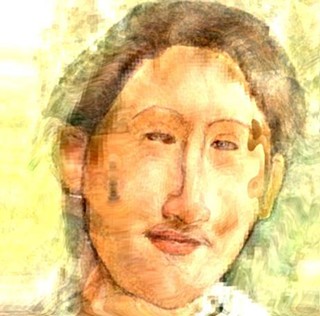"I bought my first outfit in 1980 on a visit to Oaxaca," recalls the Ohio-born Castañeda, who has lived in Tucson since 1976. "There was a lady walking down the street in this outfit, and I said to my family, 'I want that woman's clothes!'
"So we loaded her and one of her male relatives into our VW van and drove out to a cluster of huts and chickens on the outskirts of Oaxaca. She went in and changed, then came out and put the outfit she'd been wearing on me, so I'd know how to wear it properly. Everybody was laughing at this gringa woman trying to get the belt, the faja, cinched."
The woven belt held up a wrap-around skirt with white and brown horizontal rows, above which was worn a huipil, a white cotton top with a bladed tassel in the front and back; the ensemble was completed with a headpiece, a sort of black wool turban.
From that first ensemble, Castañeda's collection has grown to more pieces than she's managed to count, let alone have appraised. She figures she has at least 1,000 items, probably more, all stored in acid-free paper in the walk-in closet that used to be her home. "I've got so much stuff in there that I'm just about ready to sleep out back with the coyotes," she says.
Until January 12, part of the collection is spreading through several rooms of Tohono Chul Park's exhibit hall. Once that show closes, though, it's back to storage for these colorful, intricately patterned clothes from Mexico and Guatemala. The Castañeda Museum of Ethnic Costume is already established as a non-profit, tax-exempt organization with a substantial collection; all it lacks is permanent display space.
Only recently has Castañeda started making the rounds of city officials and other potentially interested parties, trying to establish a formal, permanent home for her collection. "We do not have the funds to rent or lease a proper place right now, and therein lies our problem," she says. "And even if some generous person said, 'I've got a big warehouse; go ahead and use it,' it would seem like I'm very demanding because textiles can't be exhibited just any old place. You need humidity control, temperature control, pest control, you have to be careful with the lighting. If you're not very, very careful, these beautiful things will just fade and fall apart."
Prominently displayed at the Tohono Chul exhibit is a Tejuana costume from Oaxaca, the sort that artist Frida Kahlo often presented herself in: bright colors, lots of lace. Other pieces feature abstract-looking designs that turn out to be crabs and other coastal creatures, or zig-zagging rainbows that, until the pattern became less representational in the 1960s, originally depicted the wings and tail feathers of a double-headed eagle. Each item features designs peculiar to a different textile region or, in many cases, a different village.
"These women are artists," Castañeda insists of Mexico's indigenous textile makers. "Whether they're doing backstrap weaving or hand embroidery, they are artists."
It's one of the oldest art forms, but unfortunately relatively few examples of its Mexican branch survive from before the first quarter of the 20th century. These were, after all, peasant clothes, not collectibles, and they just wore out.
The bulk of Castañeda's collection dates from the past 20 or 30 years, although she does have a few items dating as far back as the 1930s. Eighty percent of her collection, she says, is Latin American, primarily Mexican and Guatemalan. For Castañeda, this is a start, not a limit. "My goal," she says, "is to have at least one ethnic outfit from every major country in the world." Indeed, only a couple of weeks ago she happily took possession of a donation of textiles from Liberia.
Castañeda says that as fun as it may be to go shopping for clothes in markets, "If I have my druthers I prefer to get something literally off someone's back. The clothes that people wear are often of a better weave or more authentic design than what's made to sell to tourists."
She says that first purchase in Oaxaca more than 20 years ago probably wasn't a simple impulse to buy a single outfit. "I'm not so sure that in the back of my mind there wasn't already the grain of an idea to have a museum someday," she says.
"It's part of my collecting fever. It started when I was a little girl, collecting dolls. I probably have 900 dolls now, and I managed to sneak some of them into this exhibit. I think the good lord planted an extra gene in us, a doll-collecting gene, and at the subatomic level you get to ethnic dolls. And collecting dolls in ethnic costume just naturally led to collecting the real clothes themselves.
"It's more than an interest. It's an obsession."








